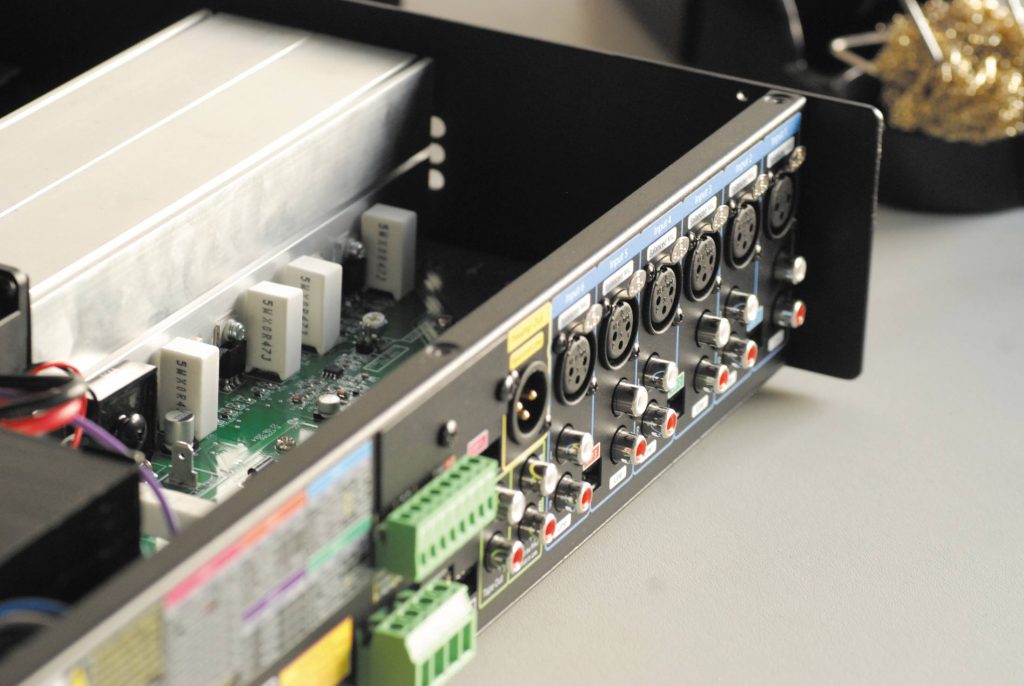
As installers know, the variables involved in any installation can number in their thousands and any single one of those variables represents a possibility of a fault. Typically these system issues are down to genuine errors, often made in the rush to get the job done for client who doesn’t want to wait. In our experience, most audio output problems from our amplifiers are installation problems rather than an issue with the amplifier itself.
So here’s a quick run down on what to check first before getting on the phone.
Problem #1: No power. No lights. (Or fuse is blowing)
Make sure the amplifier power switch is on. Also ensue that the mains power switch is on at the wall and that the powerboard (if using one) has not tripped due to overloading or other circuit issue. Check the mains and DC fuses in the amplifier in case one has blown. Only replace with the same value fuse, the use of an over rated fuse will invalidate your warranty.
If the unit repeatedly blows fuses check that the speaker line is not shorted. Check speaker types, ratings and ensure they are connected to the correct output of the amplifier.
Problem #2: Low output volume level.
Ensure that the input is the correct level (check for shorted connectors). Check for any short circuits on the speaker line. Ensure that the correct input sensitivity has been selected on the DIP switch settings (see your amplifier instruction manual for more details). Also check that the signal presence indicator on the front panel of the amplifier (if equipped) is illuminated.
Problem #3: Amplifier continually cuts in and out.
This is typically caused by ventilation and speaker circuit issues. First check that the amplifier has adequate ventilation and that the front and rear vent slots are not covered or blocked. It’s also a good idea if possible to rack mount the amplifier with a ventilation space between it and other equipment. Even a 1RU space will provide much improved air flow, especially for racks which are not mounted in climate controlled areas.
It is also worth checking the connected speaker circuit for issues such as shorts, open circuits & wiring issues.
Problem #4: No output volume at all.
First thing to do here is to check that the amplifier has a link in the send/return RCA sockets (if equipped), an open circuit here will effect the amplifiers output. Next, check the input selector DIP switch is configured correctly. The relevant DIP settings are printed on the back of the amplifier or in your instruction manual.
Remote volume can also cause output issues if the amplifier does not have the terminals linked when not in use. If the remote volume wall plate is connected to the amplifier, then double check that the volume level hasn’t been left at the minimum setting.
Problem #5: No switched 24V DC output.
Some amplifiers such as the Redback Phase 5 control the 24V DC output via a DIP switch setting. Check that this is in the correct position for the 24V switched output to operate. There is also a fuse located inside the unit on the board which in the rare event of a problem can blow, this should also be checked.
Problem #6: Distorted output.
First check that the speakers you have connected operate at the same voltage as the amplifiers output, and that they match ie: 70V speakers connected to a 100V output, or low impedance (8Ω) speakers connected to a 100V output, or vice versa.
Check for poor or incorrect wiring on the speaker circuit and ensure there are no short conditions that could be affecting the amplifiers operation.
Conclusion
These are the most common issues that plague PA installations. Most contractors are very familiar with finding solutions to these issues. In some cases testers such as the Redback Q 2001 impedance meter can prove valuable when finding the culprit. This unit provides impedance line testing for 100V speaker strings ensuring the correct load for the amplifier as well as speaker line integrity. If in doubt or your amplifier is exhibiting other strange behaviour not shown here, give us a call on 1300 780 999 and we will be glad to help.





